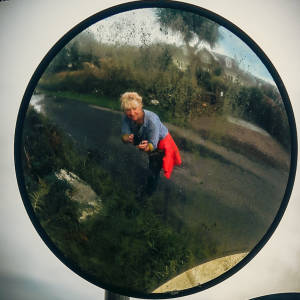Sugan chair
Horrendous weather - serious gales, lashing hail and flipping cold. The gusts in the night were very scary but so far no damage done. Spare a thought for purplejoe who was crossing the Irish sea earlier!!! I am amazed anything was going. Urgh!! I hope she has strong sea legs.
A pleasant morning in school making Christmas cakes - all very exciting and everyone one will have a mini cake to take home with them next week.
I gave my little sugan chairs a clean and dust - remember I found two covered in dirt and grime at the bottom of the heap of settles in the barn. Well, I am delighted for a little research has proved that they are the real thing. I have a fantastic book, Irish Country Furniture 1700-1950, which tells you all about this kind of thing. Sugan (which should have an accent on the u and a but I can't find it) means rope and the characteristic of these chairs is a woven seat made from straw rope. Rope twisting took two people 'Usually an older person had a lot of the material and let it out by hand, to some young person, usually a child on school holidays; the child worked the twisters ... the pay was 3 pence a day and food.' The sugan was twisted into a ball then passed around the chair frame. The most common method of 'bottoming' was to weave from side to side until the seat was covered, then another layer was woven from back to front. The chair itself was usually made from ash, and the chunky stretchers were joined together with pegs. These sturdy little chairs were one of the main forms of seating in rural areas until fairly recently but are now quite rare. I think my two were probably made for children. They're delightfully wonky but in good condition considering.

Comments
Sign in or get an account to comment.


